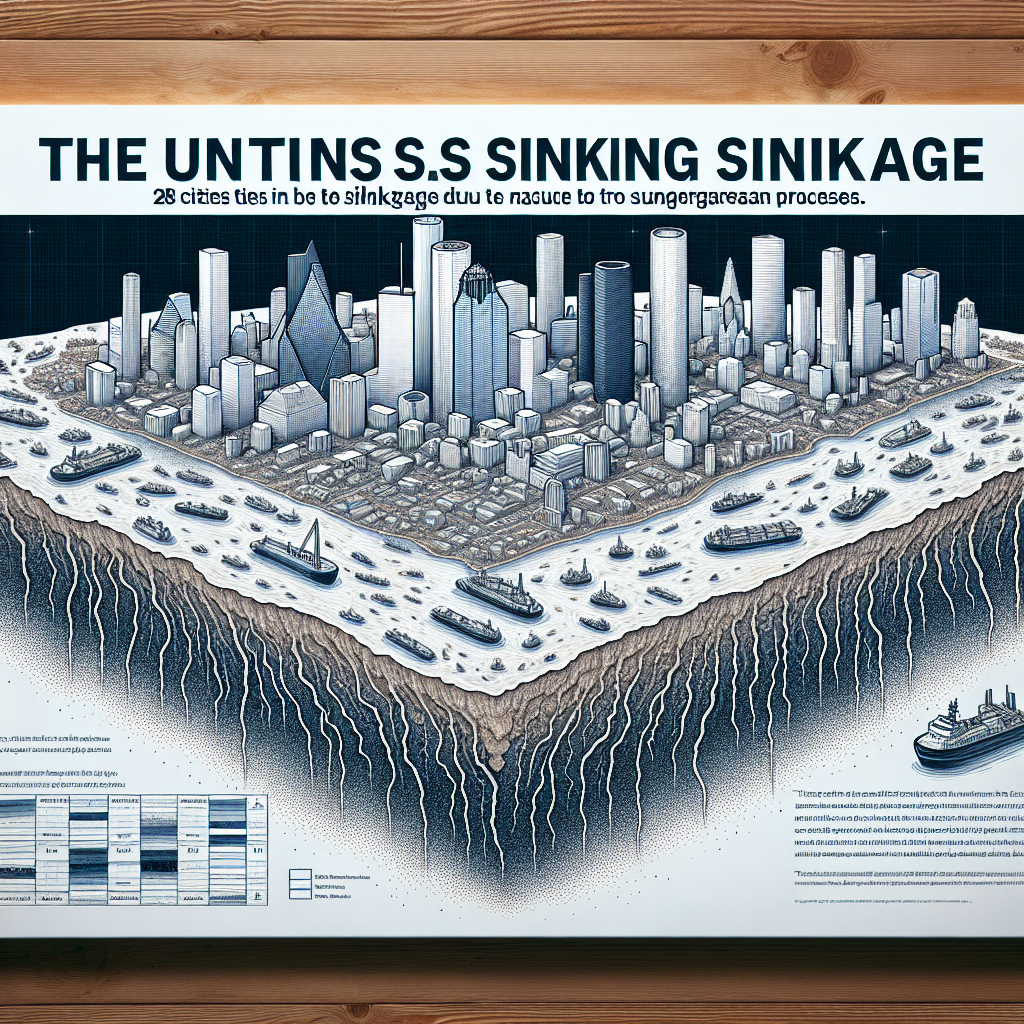A recent study in the United States, utilizing satellite data, has revealed that ground in 28 cities across the country is slowly sinking, affecting up to 34 million people. Among them, Houston, the largest city in Texas, is experiencing the fastest sinking rate. In certain areas of the city, the sinking rate reaches up to 10 millimeters (mm) per year. Researchers attribute this phenomenon primarily to groundwater extraction.
According to a press release from the Columbia Climate School at Columbia University, researchers at the institution have led a study focusing on the most populous 28 cities in the United States, finding varying degrees of subsidence in these urban areas. This phenomenon is not confined to coastal cities but also affects many inland cities.
Furthermore, through detailed data analysis, researchers have discovered that different areas within some cities exhibit varying rates of subsidence, with some areas sinking while others are rising, potentially putting pressure on buildings and other infrastructure. Researchers emphasize that continuous large-scale groundwater extraction is the most common cause of this ground subsidence.
One of the main authors of the study, Leonard Ohenhen, a postdoctoral researcher at the institution, stated, “As cities continue to expand, we will witness more urban sprawl into subsiding areas. This sinking will over time put stress on infrastructure, exceeding safety limits.”
The rapid sinking of coastal metropolises like Jakarta in Indonesia, Venice in Italy, and New Orleans in the United States has already garnered widespread attention. Jakarta’s severe subsidence issue has prompted the Indonesian government to plan relocating the capital to another city.
Recent studies indicate that the East Coast of the United States and various other regions are also experiencing subsidence. However, most of these studies rely on relatively sparse data to outline the general situation.
In contrast, this new study has examined all U.S. cities with populations exceeding 600,000, using the latest satellite data to precisely measure vertical ground movement down to the millimeter. The results show that in these 28 cities, two-thirds or more of the area of 25 cities are experiencing subsidence. Overall, about 34 million people reside in these affected areas.
Houston, the city with the fastest sinking rate, has over 40% of its area sinking more than 5 millimeters (approximately 0.2 inches) per year, with 12% sinking 10 millimeters (about 0.4 inches) annually. In certain localized areas, the sinking rate even reaches 50 millimeters (2 inches) per year.
Other Texas cities like Fort Worth and Dallas are following closely behind in fast subsidence rates. Areas experiencing rapid subsidence include the vicinity of New York’s LaGuardia Airport, as well as parts of Las Vegas, Washington D.C., and San Francisco.
In addition to ground sinking, researchers also analyzed groundwater extraction in affected areas and determined that human consumption accounts for 80% of overall ground subsidence.
Generally, subsidence occurs when groundwater is extracted from aquifers composed of fine-grained sediment. Unless the water in the aquifer is replenished, void spaces previously occupied by water will ultimately collapse, leading to compaction below and subsequent land subsidence. In Texas, the extraction of oil and natural gas exacerbates this issue.
Researchers indicate that with continued population growth, increased water usage, and certain regions experiencing climate-induced droughts, the problem of ground subsidence may worsen in the future.
The findings of the aforementioned study were published on May 8 in the journal “Nature Cities.”

